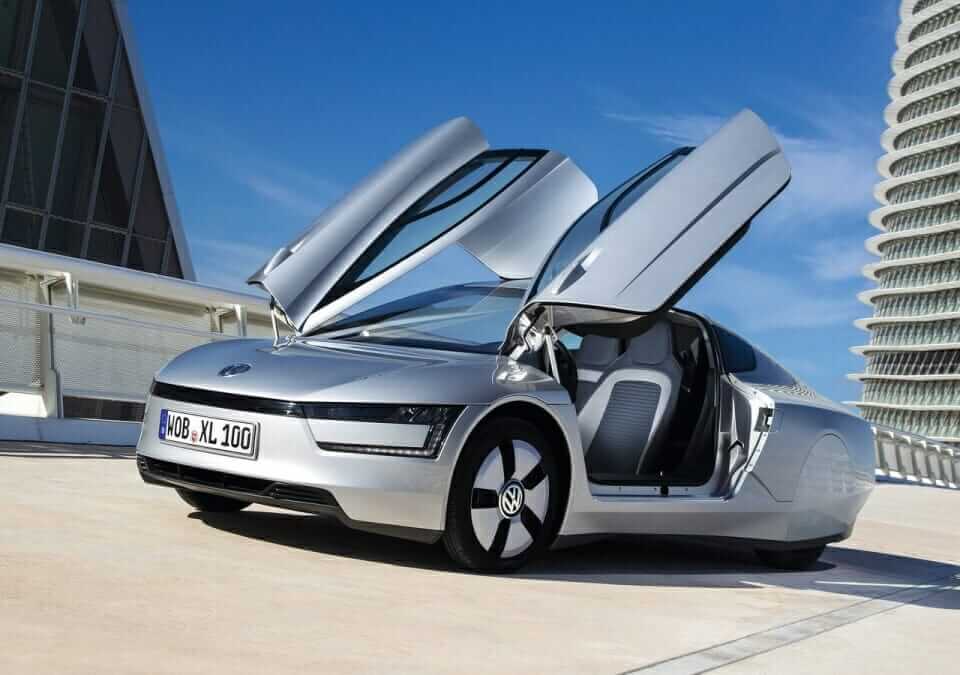Volkswagen XL1
Volkswagen launches the 1-litre super fuel economy car
“XL1 is the most aerodynamic production car ever”
“0.9 litre combined fuel consumption was a vision – now it is a reality”
Wolfsburg, 21 February 2013 – The XL1 from Volkswagen is the most fuel-efficient production car in the world, with a fuel consumption value of 0.9 l/100 km. Thanks to its plug-in hybrid system, the two-seater can also cover a distance of up to 50 km in all-electric mode and therefore with zero local emissions.
The XL1 is an automotive hero that follows pure sports car design principles: low weight (795 kg), perfect aerodynamics (Cd 0.189) and a low centre of gravity (1,153 mm high). This gives the efficient Volkswagen the ability to cruise on the road at a constant speed of 100 km/h using just 6.2 kW / 8.4 PS. In all-electric mode, the XL1 requires less than 0.1 kWh to cover a driving distance of over one kilometer.
High-tech lightweight design, perfect aerodynamics and a plug-in hybrid system – consisting of a two-cylinder TDI engine (35 kW / 48 PS), E-motor (20 kW / 27 PS), 7-speed dual clutch gearbox (DSG) and lithium-ion battery – all make it possible for the new Volkswagen XL1 to emit just 21 g/km of CO2. If necessary, the XL1, with a top speed of 160 km/h, can accelerate to 100 km/h in just 12,7 seconds. Clearly, 0.9 l/100 km fuel consumption is a record figure that has not been achieved by any other vehicle to date, and it illustrates how Volkswagen is redefining what is technically feasible in carmaking.
Conceptually, the XL1 represents the third evolutionary stage of Volkswagen’s 1-litre car strategy. When the new millennium was ushered in, Prof. Dr. Ferdinand Piëch, who is today Chairman of the Supervisory Board of Volkswagen AG, formulated the visionary goal of bringing to market a production car that was practical in everyday use with fuel consumption of one litre per 100 km. In the two-seat XL1, this vision has become reality. Despite the tremendous efficiency of the XL1, developers successfully came up with a body concept, which delivers more everyday utility than in the two previous prototypes. While the driver and passenger sat in a tandem arrangement for optimal aerodynamics in the L1, the 1-litre car presented in 2002 and in 2009, in the XL1 two occupants sit slightly offset, side by side, nearly as in a conventional vehicle.
The XL1 is 3,888 mm long, 1,665 mm wide and just 1,153 mm tall. By usual automotive standards these are extreme dimensions. For comparison: a Polo has a similar length (3,970 mm) and width (1,682 mm) but is significantly taller (1,462 mm). Even a purebred sports car like today’s Porsche Boxster is 129 mm taller (1,282 mm). So, the XL1 will make a spectacular appearance – a car of the future, built for today.













































